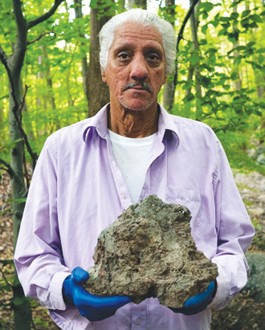In the documentary Mann vs. Ford, the stories, statistics and images all beg the question, “Who let this happen?” The answer is obvious—Ford Motor Co.—but the path to justice is tortuous.
The film chronicles the effects of Ford Motor Company’s dumping of hundreds of thousands of tons of toxic waste from 1967 to 1971 in Ringwood, N.J., home of the Ramapough Native American tribe. At the time, Ford’s Mahwah plant in New Jersey was the largest automotive plant in the world, and its lead and arsenic contaminated the drinking water, air and soil of Ringwood. Cancer rates skyrocketed. Community members seldom lived over the age of 60.
Through it all, Ringwood residents had no idea what was happening. In fact, Ramapough children used to eat the colorful dirt because it tasted sweet. The affected community’s legal fight for recompense provides the heart, and title, of Mann v. Ford.
The story easily fills two hours, attacking the problem from racial, ecological, biological and socioeconomic angles. Negative sociological factors affecting the Ramapough compounded the damage, leading to decades of inaction, disease and death.
Unfortunately, about two-thirds of the way through, the story derails for about 10 minutes to profile the leading lawyer, Vicki Gilliam. Her empathy for the Ramapough’s predicament stems from her own past hardships at the hands of environmental contamination, but the film digresses further into her struggles as a teenage mother. Eventually, Gilliam pulls herself up and becomes a lawyer.
Yes, her story is heartwarming—but is it relevant? Several other lawyers worked on the case, many experts prepared testimony, and none receive the same amount of attention. In a movie so otherwise well-constructed, this break is jarring, seems artificial and cheapens the gravity of the Ramapough’s story by cramming in another narrative for emotional shock value only. Emotional shock value is not what the issue is about; it’s about injustice that all but destroyed a community, which is where the film keeps its focus best.
One measure of the quality of a documentary is how well the story tells itself, and on this front, Mann vs. Ford succeeds admirably. Some of the most memorable images in Mann v. Ford are those of cars with gleaming new paint jobs. Different people provide the voiceovers, and each tells a damning story about Ford and its waste. The message of the contradiction between the two is clear: the cost of such an illusion of glamor is too high.
Filmmakers Maro Chermayeff and James Redford appear after a screening of ‘Mann vs. Ford’ on Wednesday, July 6, at the Smith Rafael Film Center. 1118 Fourth St., San Rafael. 7pm. $10. 415.454.1222.











